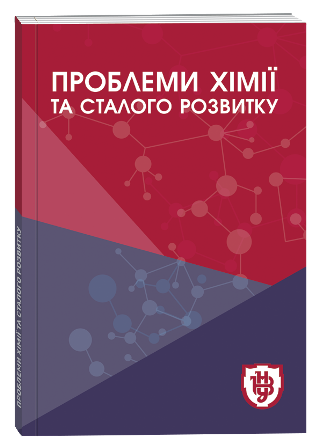THE ROLE OF GRAIN DRYER MODERNIZATION IN THE DECARBONIZATION OF THE AGRICULTURAL DOMAIN
DOI:
https://doi.org/10.32782/pcsd-2025-3-6Keywords:
grain drying complexes, emissions, carbon footprint, sustainable development, low-carbon economy, decarbonization, agricultural production, agricultural domainAbstract
Objective. The aim of this article is to analyze the techno-environmental aspects of grain drying complexes functioning in the agro-industrial sector in the context of carbon footprint formation and the ways to reduce atmospheric emissions as a component of the transition to a low-carbon economy.Methods. The study employs an interdisciplinary review approach based on the analysis of scientific publications from the Scopus and Web of Science databases, methodological guidelines, principles of life cycle assessment, and energy analysis. A comparative evaluation of conventional and alternative grain drying technologies was conducted, taking into account energy consumption, emission levels, and decarbonization potential.Results. Based on the results of the study, it has been confirmed that grain drying is one of the most energy-intensive stages of post-harvest processing of cereals, leading to significant consumption of fossil fuels and the associated formation of a carbon footprint, accompanied by substantial emissions of CO₂, CO, and particulate matter PM₁₀ and PM₂.₅. It has been established that the majority of conventional grain drying complexes lack efficient flue gas cleaning systems and are characterized by excessive energy consumption, which contradicts the objectives of decarbonization. The implementation of alternative energy solutions – such as biomass, heat pumps, and solar energy – as well as advanced filtration technologies and catalytic afterburning of exhaust gases, has been substantiated as a promising direction. The importance of life cycle assessment is emphasized as a tool for identifying "carbon-vulnerable" stages and developing strategies for transitioning to a low-carbon economy in the agricultural domain.Conclusions. Reducing the environmental impact of drying processes is crucial for the ecological modernization of agro-industrial production. The implementation of energy-efficient and low-carbon technologies – particularly through the modernization of drying equipment and the shift to renewable energy sources – is of strategic importance for the development of sustainable and climate-neutral agriculture.
References
Активне вентилювання та сушіння зерна : навч. посіб. / О. І. Гапонюк, М. В. Остапчук, Г. М. Станкевич, І. І. Гапонюк. Одеса : ВМВ, 2014. 326 с.
Гаврисюк О. І., Караїм О. А. Екологічні аспекти функціонування зерносушильного комплексу. Сучасна наука та освіта Волині : матеріали Всеукр. наук.-практ. конф. студентів, аспірантів та молодих вчених (22 травня 2025 року). Луцьк. 2025.
Омаров І. С., Цивенкова Н. М. Практичні результати сушіння зернових генераторним газом. Аграрна енергетика в ХХІ сторіччі: досягнення і перспективи розвитку : матеріали ІІ Міжн. наук.-практ. конф. (14 грудня 2023 року). Білоцерківський НАУ. 2023. С. 104–110. URL: https://science.btsau.edu.ua/sites/default/files/tezy/tezy_agr_ener_xxi_14.12.2023.pdf#page=104
Паламарчук І. П., Цуркан О. В., Присяжнюк Д. В., Полєвода Ю. А. Обґрунтування схеми віброозонуючої сушарки для післязбиральної обробки зерна. Наукові праці Національного університету харчових технологій. № 22. 2016. С. 151–156.
Піскарьов О. М., Мусієнко Д. В. Сучастні системи автоматизаціїї обробки зерна. Матеріали ХІХ міжнародного форуму молоді «Молодь і індустрія в XXI столітті». 2023 р. С. 219.
Ashkan Nabavi-Pelesaraei, Shahin Rafiee, Seyed Saeid Mohtasebi, Homa Hosseinzadeh-Bandbafha, Kwok-wing Chau. Comprehensive model of energy, environmental impacts and economic in rice milling factories by coupling adaptive neuro-fuzzy inference system and life cycle assessment. Journal of Cleaner Production. Volume 217. 2019. P. 742–756. DOI: https://doi.org/10.1016/j.jclepro.2019.01.228
Chen Z., Zhao S., Rao Z., Zhang R. Experimental Study on Low-resistance Venturi Water Film Cyclone with Vibrating String Grid. Jordan Journal of Civil Engineering. № 14(3). 2020. Р. 295. URL: https://jjce.just.edu.jo/Download. ashx?f=TsZShoU806bfrho 36mu6ECzqgkLV3RfyoNH6e6Z1Ok8%3D
Czajkowska A. Installations for cleaning exhaust fumes from dust–gas pollutants. Environmental Protection and Natural Resources. № 29(4), 2018. Р. 26–32. DOI: https://doi.org/10.2478/oszn-2018-0019
Fudholi А., Sopian К., Ruslan M. H., Alghoul M. A., Sulaiman M.Y., Review of solar dryers for agricultural and marine products. Renewable and Sustainable Energy Reviews. Volume 14. Issue 1. 2010. P. 1–30. DOI: https://doi.org/10.1016/j.rser.2009.07.032
Gopan A., Verma P., Yang Z., Axelbaum R. L. Quantitative analysis of the impact of flue gas recirculation on the efficiency of oxy-coal power plants. Int. J. Greenh. Gas Control. № 95. 2020. 102936. DOI: https://doi.org/10.1016/j.ijggc.2019.102936
Hasan Tarek Mondal, Sazzat Hossain Sarker. Comprehensive energy analysis and environmental sustainability of industrial grain drying. Renewable and Sustainable Energy Reviews. Vol. 199. July 2024. 114442. DOI: https://doi.org/ 10.1016/j.rser.2024.114442
Heikki T. Jokiniemi, Jukka M. Ahokas, Drying process optimisation in a mixed-flow batch grain dryer. Biosystems Engineering. Volume 121. 2014. P. 209–220. DOI: https://doi.org/10.1016/j.biosystemseng.2014.01.002
IPCC Guidelines for National Greenhouse Gas Inventories. Volume 2: Energy. 2023. URL: https://www.ipcc-nggip.iges.or.jp/public/2006gl/vol2.html
Jabłońska М., Palkovits R. It is no laughing matter: nitrous oxide formation in diesel engines and advances in its abatement over rhodium-based catalysts. Catal. Sci. Technol. № 6. 2016. Р. 7671–7687. DOI: https://doi.org/10.1039/c6cy01126h
Katarzyna Chojnacka, Katarzyna Mikula, Grzegorz Izydorczyk, Dawid Skrzypczak, Anna Witek-Krowiak, Konstantinos Moustakas, Wojciech Ludwig, Marek Kułażyński, Improvements in drying technologies – Efficient solutions for cleaner production with higher energy efficiency and reduced emission. Journal of Cleaner Production. Volume 320. 2021. 128706. DOI: https://doi.org/10.1016/j.jclepro.2021.128706.
Liu J., Zhu F., Ma X. Industrial application of a deep purification technology for flue gas involving phase-transition agglomeration and dehumidification. Engineering. № 4. 2018. Р. 416–420. DOI: https://doi.org/10.1016/j.eng.2018.05.009
Mohammad Hariz Abdul Rahman, Sau Soon Chen, Putri Razreena Abdul Razak, Nurul Ain Abu Bakar, Mohammad Shahid Shahrun, Norziana Zin Zawawi, Azzami Adam Muhamad Mujab, Fazlyzan Abdullah, Fauzi Jumat, Rahiniza Kamaruzaman, Shamsul Amri Saidon, Shaidatul Azdawiyah Abdul Talib. Life cycle assessment in conventional rice farming system: Estimation of greenhouse gas emissions using cradle-to-gate approach. Journal of Cleaner Production. Volume 212. 2019. P. 1526–1535. DOI: https://doi.org/10.1016/j.jclepro.2018.12.062
Seyed Hashem Samadi, Barat Ghobadian, Gholamhassan Najafi, Ali Motevali. Potential saving in energy using combined heat and power technology for drying agricultural products (banana slices). Journal of the Saudi Society of Agricultural Sciences. Volume 13, Issue 2. 2014. P. 174–182. DOI: https://doi.org/10.1016/j.jssas.2013.09.001
Sinha Majumdar S., Celik, G., Alexander A. M., Gawade P., Ozkan U. S. In-situ incorporation of binder during sol-gel preparation of Pd-based sulfated zirconia for reduction of nitrogen oxides under lean-burn conditions: effect on activity and wash- coating characteristics. Appl. Catal. B Environ. № 202. 2017. Р. 134–146. DOI: https://doi.org/10.1016/j.apcatb.2016.08.062
Styszko, K., Samek, L., Szramowiat, K. et al. Oxidative potential of PM10 and PM2.5 collected at high air pollution site related to chemical composition: Krakow case study. Air Qual Atmos Health 10. 2017. Р. 1123–1137. DOI: https://doi.org/10.1007/s11869-017-0499-3
Xinzhuang Gu, Jianguo Dai, Haifeng Li, Yanjun Dai, Experimental and theoretical assessment of a solar assisted heat pump system for in-bin grain drying: A comprehensive case study. Renewable Energy. Volume 181. 2022. P. 426–444. DOI: https://doi.org/10.1016/j.renene.2021.09.049








